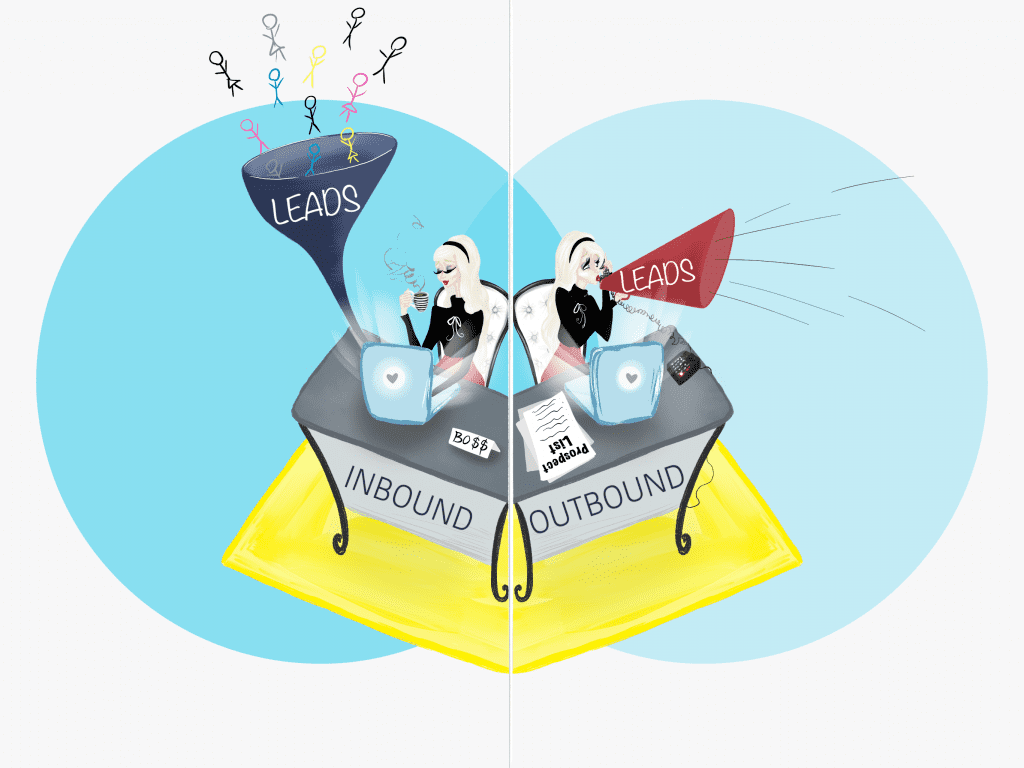HOW ARE INBOUND LEADS DIFFERENT FROM OUTBOUND LEADS
Inbound marketing is everywhere. If you’re reading this post, you most likely have some form of strategy in place such as a blog, social media presence, an optimized website or all of those tactics combined.
If you’re doing a bit of inbound marketing, you’re most likely getting leads from your website or other online sources. Many companies receive leads from their website even before implementing a complete inbound marketing strategy. These leads are called inbound leads.
How are Inbound Leads Different from Outbound Leads?
Essentially, inbound leads are coming to you. They’ve done their research and know what their problem is, how to solve it, and who should solve it. By the time they speak with a human at your company, they are trying to decide why you’re the right option compared to other competitors.
Outbound leads don’t know who you are, yet. They may not even know what problem you can help them solve, or that they even have a problem to begin with. Your business has approached them, or collected information through trade shows, and reached out.
8 Core Differences Between Inbound and Outbound Leads:
1. Inbound leads are prospects that find you through a trail of information. Outbound leads are prospects that you reach out to when you discover them.
2. Inbound leads are found through inbound marketing tactics such as blogging, social media tactics, SEO, and other forms of content. Outbound leads come from your direct emails, trade show conversations, or phone calls to prospects.
3. Inbound leads have learned about your company and trust that you know how to solve their problem at the point of conversation. Outbound leads are assumed to have no prior knowledge of your company or your product.
4. Inbound leads are sold long before human interaction. Outbound leads don’t know what they need until after you’ve spoken to them and pitched your service or product.
5. Inbound leads are higher quality at the point of human interaction given that they have done their homework about their problem, solution, and your company. Outbound leads are lower quality at the point of human interaction because you are starting the education process from scratch.
6. Inbound leads take half as long to close than outbound leads who have never heard of you before.
7. Inbound leads have a lower CAC (Customer Acquisition Cost) than outbound leads due to a shorter sales cycle. In fact, inbound leads are 61% less expensive than outbound leads.
8. Inbound leads have a passive position in the sales process, educating themselves first. Outbound leads require you to be proactive and reach out.
Which Leads are Better for Your Company?
While any lead generated for your company can be of quality and lead to more revenue, inbound leads have a slight advantage to outbound leads.
Inbound leads are prospects that have been nurtured through their own “homework” and contact you for the solution. Because of the proactive nature of the prospect, they are more likely to close when they speak with your sales team. You’ve already built the trust with this type of lead through your inbound marketing efforts.
Studies have also shown that inbound leads cost 61% less than outbound leads. Though inbound leads may take time, especially when you’ve only started your campaign, it is more cost-effective in the long run.
While you should not eliminate either lead generation tactic, it is important to find a happy marriage between the two so that your strategy is working to help you gain the best leads possible from every source.

